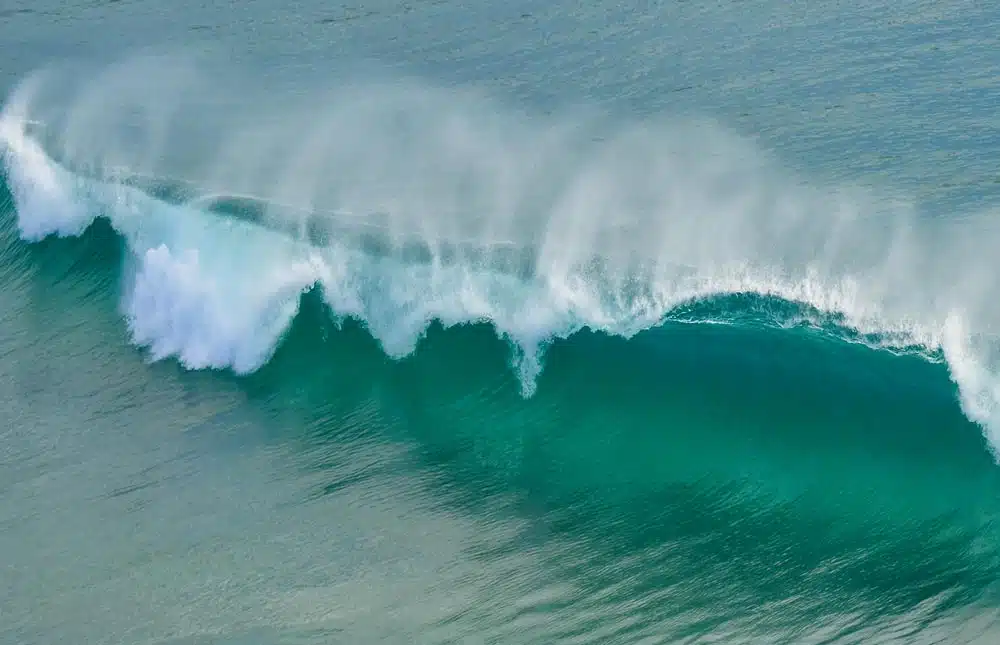A better understanding of the major marine movements
Calm, regular, powerful, complex: tides are a natural phenomenon that is both fascinating and mysterious. Before sailing, you have to take into account the tidal currents. Here are four vital things to know about the ebb and flow of the tide.
1. Definition
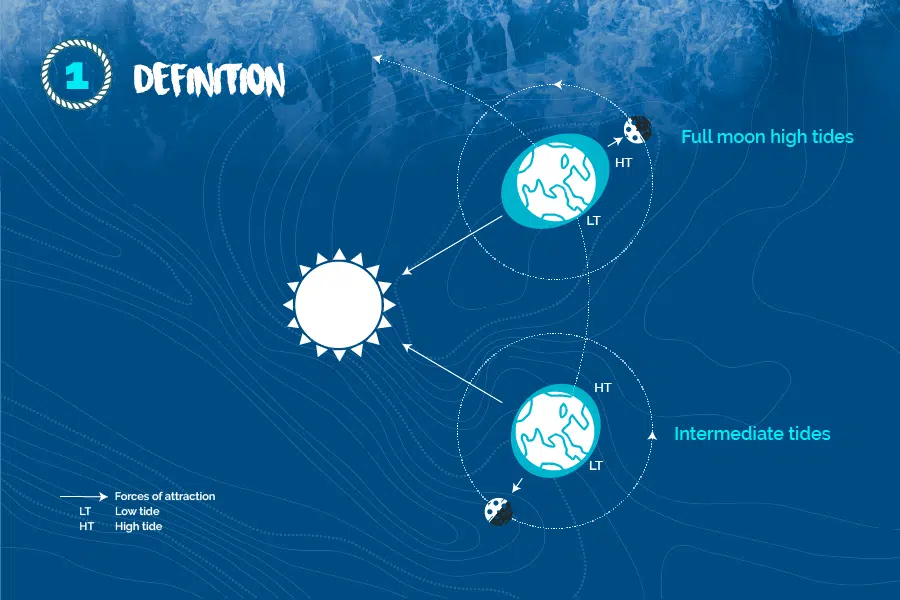
The tide is the rise and fall of the oceans and seas. It is the result of forces exerted by the Moon and the Sun on the sea combined with the rotation of the Earth which generates a centrifugal force. This so-called gravitational force varies depending on the position of the Moon and the Sun in relation to the Earth: if they are on the same side or directly opposite each other, there will be a high tide. If they are separated by 90°, there will be a low tide..
2. Tidal coefficient
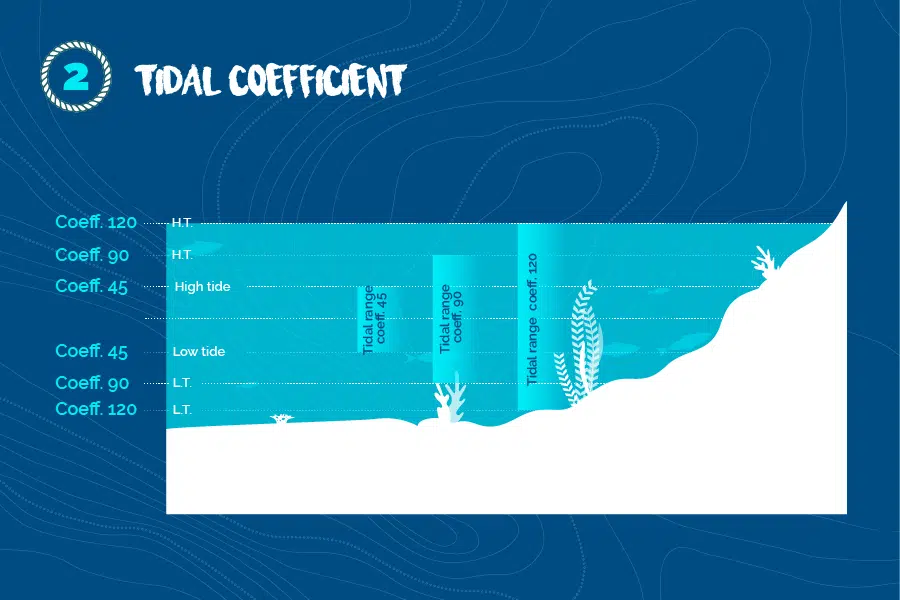
The tidal coefficient is the size of the tide in relation to its mean. It usually varies between 20 and 120. The higher the tidal coefficient, the larger the tidal range – i.e. the difference in water height between high and low tide. This means that the sea level rises and falls back a long way. The mean value is 70. We talk of strong tides – called spring tides – from coefficient 95. Conversely, weak tides are called neap tides.
3. Marine currents

A marine current is a regular, continuous, cyclic movement of sea water. It is created by the combined action of constant winds pushing the surface water, as well as by the tide and the Coriolis force which changes the direction of currents according to the hemisphere. As a reminder, the Coriolis principle is an effect whereby the trajectory of a moving object on the surface of the Earth is deflected. The current is also created by the numerous differences in temperature…
4. Exceptional tides
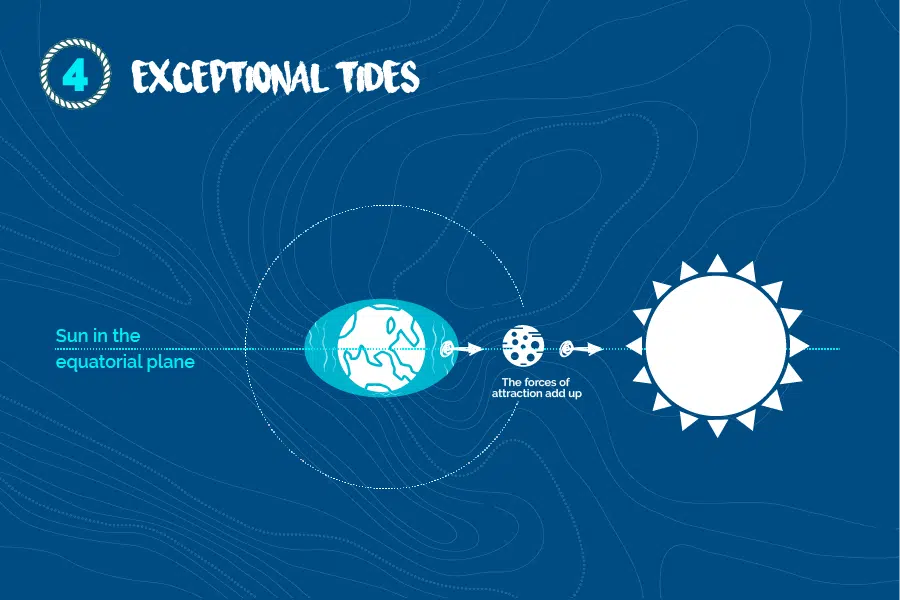
Des grandes marées spectaculaires peuvent être observées en France. À Saint-Malo, le marnage atteint, par exemple, plus de 12 mètres en moyenne du fait de sa situation géographique. Le 21 mars 2015, la « marée du siècle » s’est produite avec un coefficient à 119. Ce phénomène a lieu tous les 18 ans du fait de l’alignement des astres et de l’équinoxe de printemps dans l’hémisphère Nord.
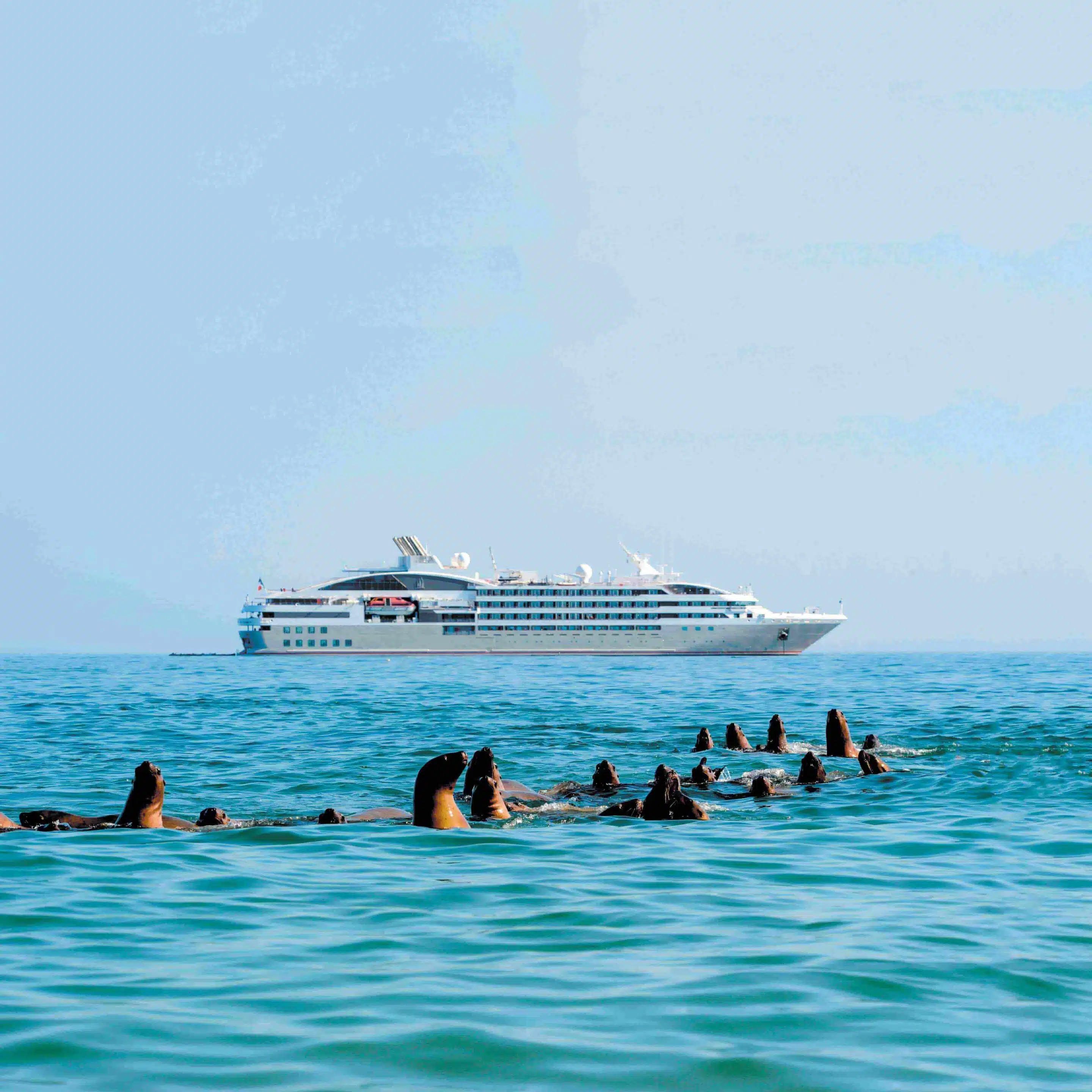
Sail with PONANT
Whether you prefer the Atlantic Ocean or the Mediterranean Sea, the Indian Ocean or the Caribbean Sea, PONANT takes you to all the seas of the world.

